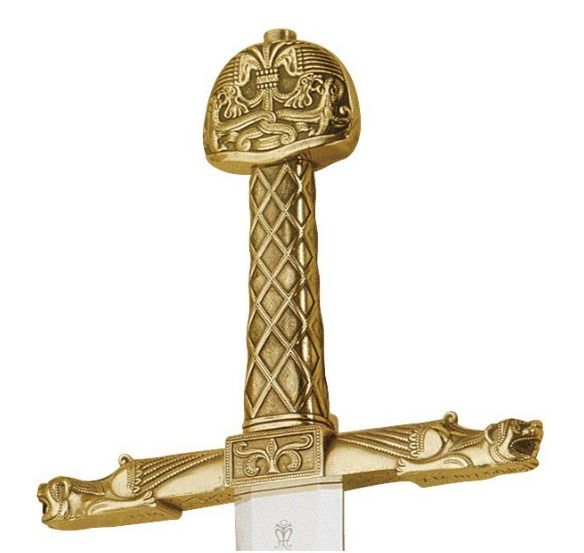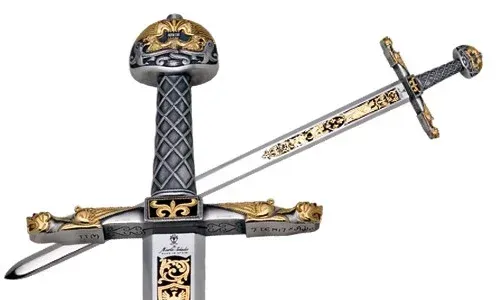Whose was the Joyeuse Sword?
The fascinating story of the Joyous Sword, also known as Joyeuse, intertwines myths, legends, and historical facts to create one of the most captivating narratives of medieval Europe. Attributed to Emperor Charlemagne, this sword was not only a weapon on the battlefield but also a symbol of authority and power that shaped centuries of history in France. Today, this emblematic sword can be admired at the Louvre Museum, though its authenticity remains a subject of academic debate.
History of the Joyous Sword
The Joyous Sword, according to chronicles, was created during the Carolingian period, between the 10th and 11th centuries AD. Although surrounded by numerous legends, it is believed to have been forged to serve as the personal sword of Charlemagne, the great emperor of the Holy Roman Empire. According to popular tales, Charlemagne wielded this sword in multiple battles during his reign, solidifying his image as an invincible leader.
Origins and Military Use
In the context of the Carolingian wars, possessing a sword like Joyeuse was essential for demonstrating power and inspiring troops. The sword stands out for its flat blade, sharpened on both edges, designed to be used alongside a shield in the opposite hand. It was said that Joyeuse was not merely a combat weapon but also a talisman with almost magical properties, including the ability to shine intensely, blinding enemies in battle.

Loss and Recovery
One of the most famous stories about Joyeuse recounts how Charlemagne lost it during a battle. In a gesture of generosity and strategy, he promised land to the soldier who found it. The sword was eventually recovered in the region of Ardèche by a member of his army, who was rewarded with that territory. The emperor renamed the lands "Joyeuse" in honor of the sword.
Characteristics and Decoration
An Eclectic Design
The Joyous Sword is characterized by a mix of decorative styles from various European regions. Among its initial features were dragon engravings, which over time were replaced by other motifs, such as the fleur-de-lis, a symbol of French royalty. However, for the coronation of Napoleon Bonaparte, this decoration was removed.
The entirety of the sword is a work of art. The pommel is adorned with an intricate network of diamonds, while the hilt and cross showcase meticulous detail, including two stylized winged dragons. This rich ornamentation underscores its value as both a historical and artistic treasure.

A Louvre Treasure
Since 1793, following the French Revolution, Joyeuse has been preserved at the Louvre Museum in Paris. Although there is controversy over whether the sword on display is the original, there is no conclusive evidence to support this claim. Its presence in the museum has made it a subject of great interest for both historians and visitors passionate about medieval history.
The Joyous Sword in Coronations
One of Joyeuse's most significant roles lay in its ceremonial use. From the coronation of Philip III in 1271 to that of Charles X in 1825, the sword was used as a symbol of the continuity of royal power in France. For long periods, the sword was kept in the Abbey of Saint-Denis, under the care of monks, undergoing several decorative changes throughout the centuries.

Legacy and Symbolism
Beyond the stories of its magical abilities, the Joyous Sword represents power and legitimacy in the French monarchy. Its association with Charlemagne granted it an almost mystical status, making it an essential piece in France's ceremonial traditions. Joyeuse has been evoked on multiple occasions as a symbol of the glory and grandeur of France's past.
Myths and Legends
Among the legends associated with the sword is the idea that it could reflect sunlight in a way that blinded its enemies. This myth, while difficult to confirm historically, has helped perpetuate its fame as a unique weapon and an emblem of invincibility for Frankish armies.
| Feature | Description |
| Ornamental Material | Diamonds, dragon engravings, and fleur-de-lis motifs |
| Museum | Louvre Museum, Paris |
| First Coronation | Philip III (1271) |
| Last Coronation | Charles X (1825) |
















